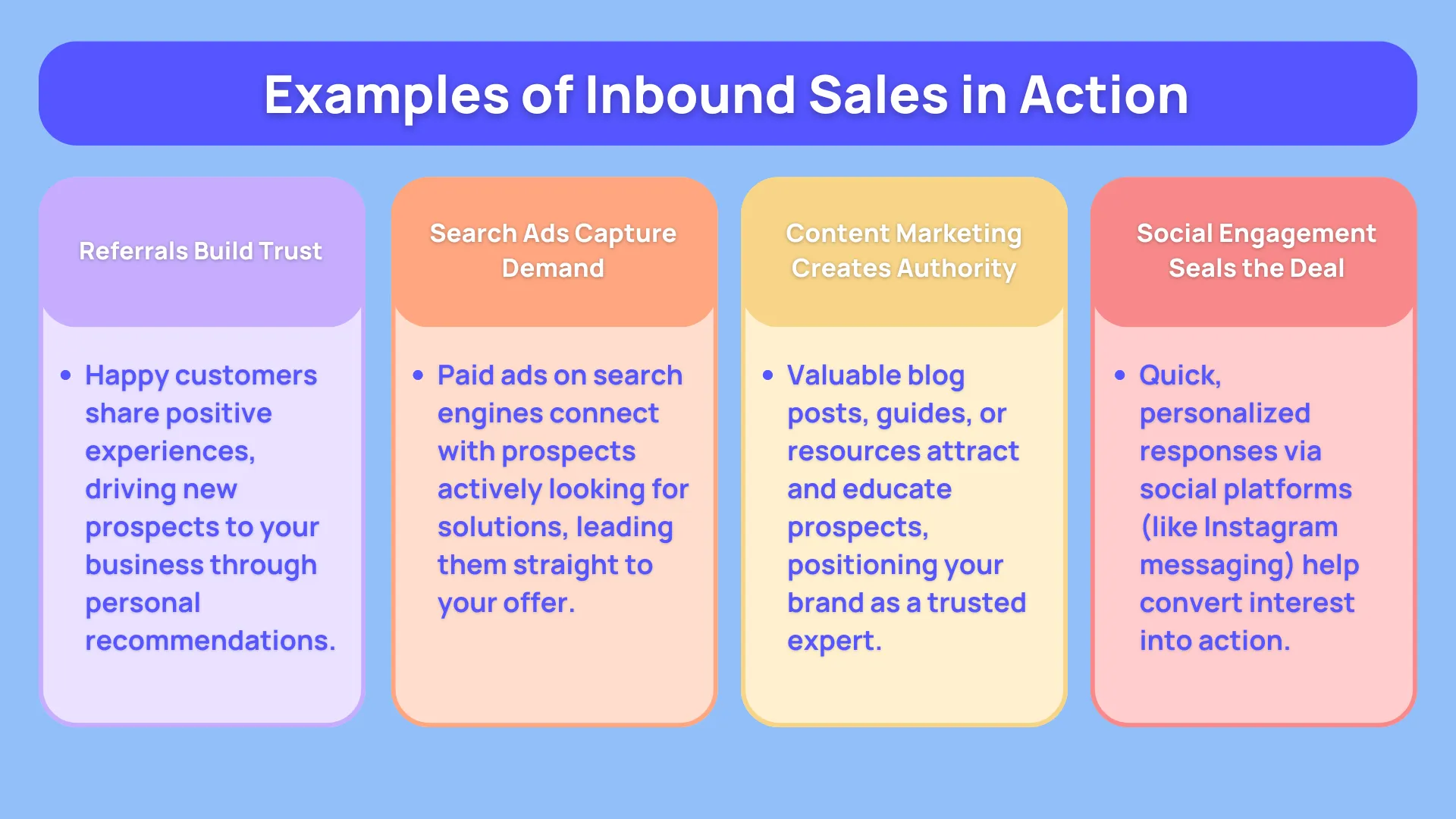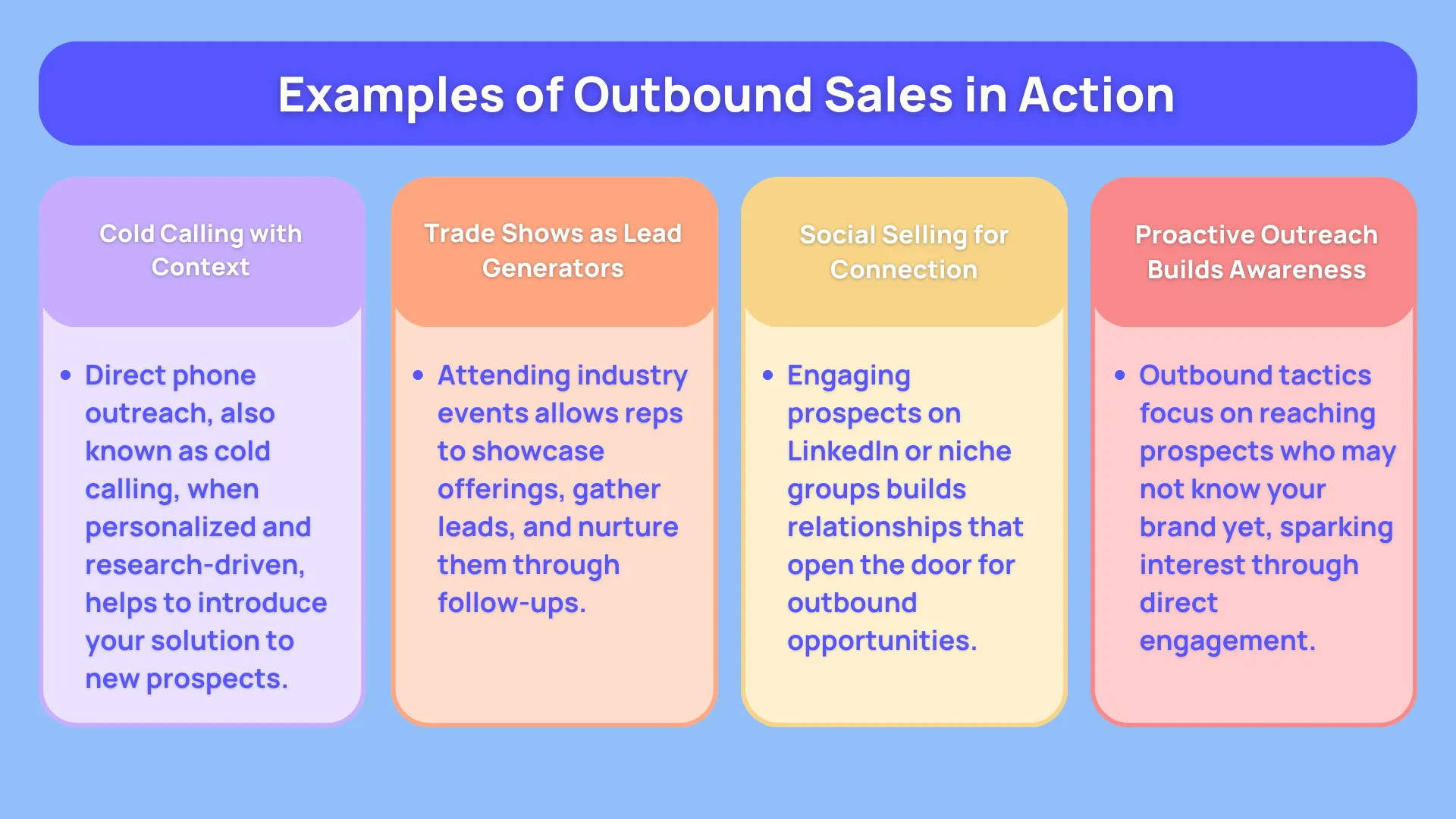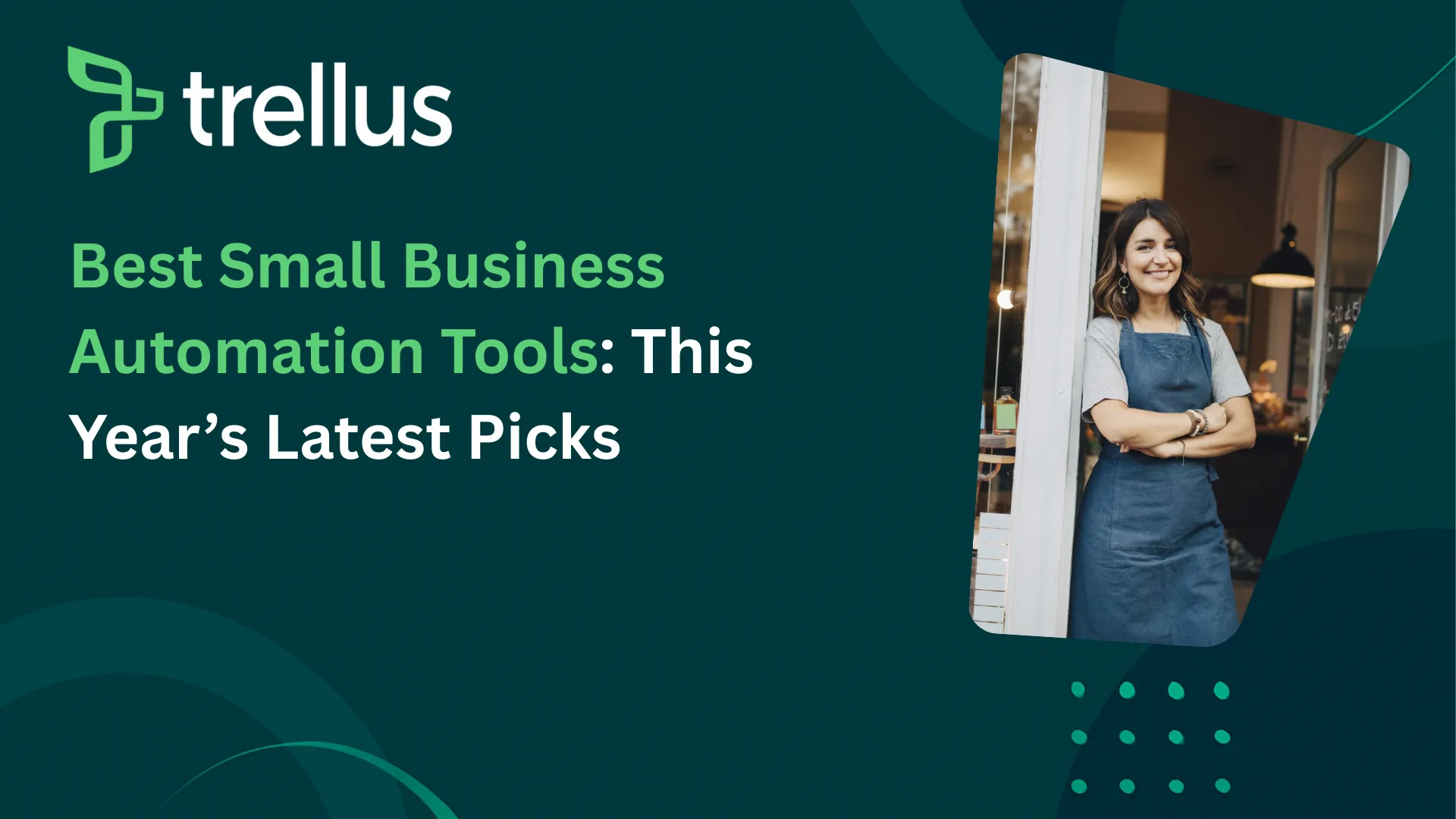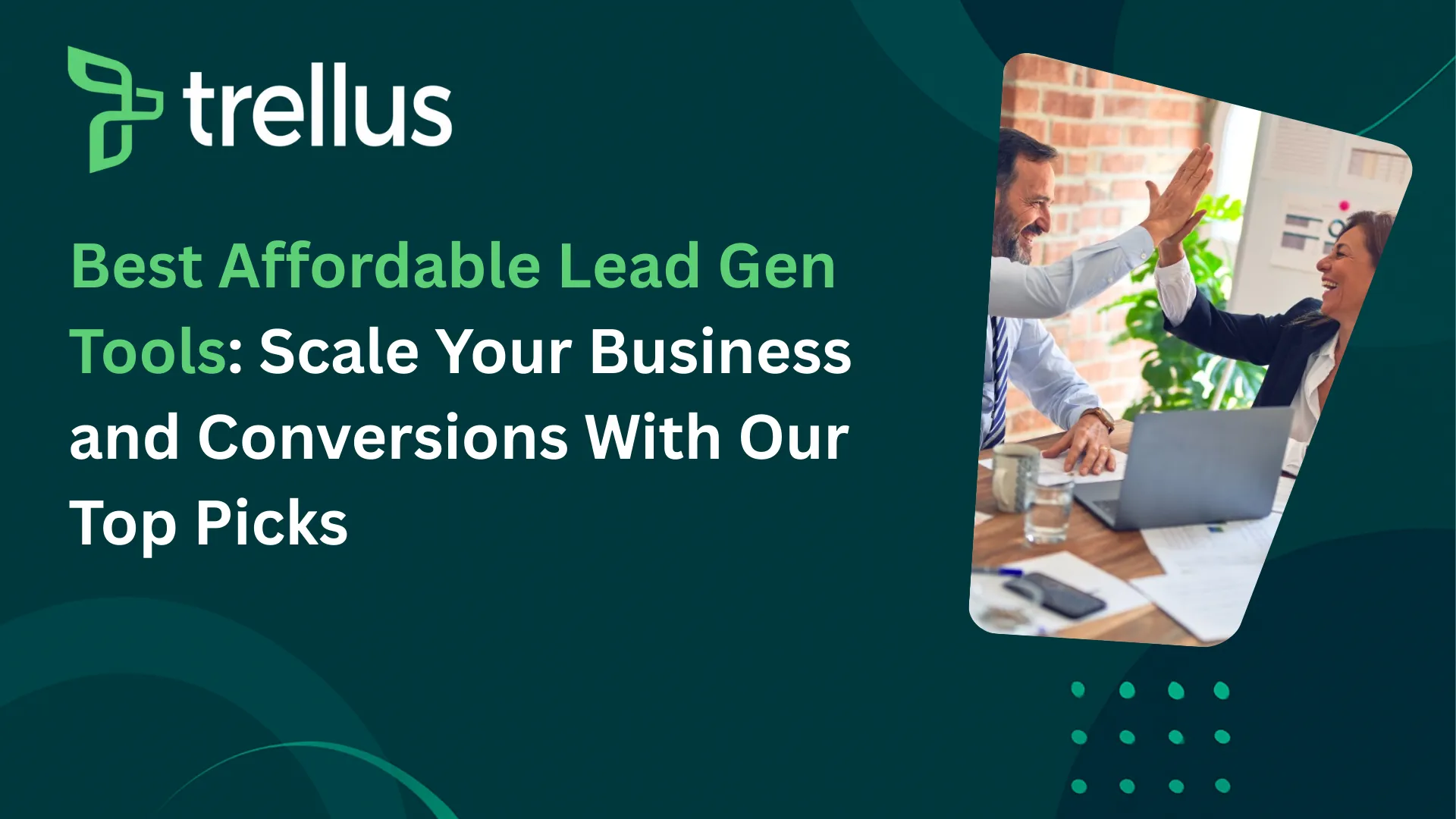
Our Top Picks


The sales world has changed a lot over the past few years, but one debate still stirs conversation in sales teams everywhere: inbound vs outbound sales — which approach delivers the best results?
The truth is, very few businesses succeed with a purely one-sided approach.
For most companies and business owners in this year and beyond, the smartest customer acquisition strategy is a thoughtful combination of inbound sales and outbound sales working together to create a steady deal flow.
If your brand already has strong market recognition and a healthy demand for your products, inbound sales might feel like second nature.
You might already have a stream of potential buyers coming in through your content marketing funnel, search engine visibility, and referrals. Alternatively, on the other hand, if your brand is still new or your product is unfamiliar to your target market, outbound sales — with targeted outreach and proactive sales prospecting techniques — might be what moves the needle.
But whichever path you lean toward, one thing remains constant: you need to generate leads and convert them into paying customers. That means understanding what is “inbound and outbound sales”; how they differ, and how to choose the right mix for your goals.
What are Inbound and Outbound Sales?

At their core, inbound and outbound sales are two different methods for reaching potential customers and moving them through the sales funnel stages.
- Inbound sales is when customers come to you — they already have some awareness or interest in your brand. They may find you via search engines, social media content, word-of-mouth referrals, or paid ads.
- Outbound sales is when your sales team reaches out directly to prospects — often people who may not even know your brand exists yet. This could involve cold outreach via calls, personalized email outreach campaigns, LinkedIn messaging, or in-person networking at industry events.
Difference Between Inbound and Outbound Sales
The difference between inbound and outbound sales lies mainly in who initiates the first contact. Inbound is customer-driven; outbound is salesperson-driven.
With inbound, the buyer has already shown buyer intent signals — they’ve searched for a relevant keyword, downloaded a guide, subscribed to your email list, or been referred by a satisfied customer. In outbound, the salesperson’s job is to spark that intent from scratch, often by identifying a problem the buyer may not yet realize needs solving.
Inbound is typically less intrusive but requires strong lead generation methods and a consistent content presence. Outbound is more proactive but can require more persistence, personalization, and resilience.
Inbound Sales: Definition, Benefits, and Challenges
Inbound sales starts with attracting potential customers through valuable, relevant content and strong brand presence. The idea is to make it easy for people who are already searching for a solution like yours to find you, trust you, and start a conversation with you.
Benefits of inbound sales:
- You engage with prospects who already have some awareness of their problem and your potential solution.
- Shorter trust-building period because they came to you willingly.
- Can scale well with effective content marketing funnel strategies.
Challenges of inbound sales:
- It can take time to build the traffic and brand reputation needed for a steady lead flow.
- Competitive markets may require high investment in content, SEO, and paid ads.
Examples of Inbound Sales in Action

1. Referrals
Word-of-mouth recommendations are one of the oldest forms of inbound sales. A happy customer shares their great experience with someone they know, and that person comes looking for you. This often happens in industries where trust and reputation matter most.
For example, a dog owner has a fantastic experience with Puptastic Care, a doggy daycare in San Diego. Impressed with the service, they recommend it to a friend. The friend visits the company’s Instagram page, sends a message asking about weekday care packages, and receives a prompt, friendly reply with pricing and a discount code. That incentive seals the deal for a trial week of care.
2. Search Engine Advertising
Here, prospects discover you through targeted ads that appear when they search for a relevant term. A pet owner might type “doggy daycare near me” into Google, see Puptastic Care’s ad at the top of the results, and click through to learn more.
3. Content Marketing
Content-driven inbound sales is powerful because it builds authority while attracting qualified leads. Imagine someone searches for “how to help a depressed dog” and finds Puptastic Care’s blog post about pet exercise and mental health.
After reading and finding it valuable, they explore other posts, learn about Puptastic Care’s exercise classes, and sign up.
Outbound Sales: Definition, Benefits, and Challenges
Outbound sales is all about proactive outreach. Your sales team identifies target prospects, researches them, and initiates contact to spark interest in your product or service.
Benefits of outbound sales:
- Can generate results even without existing brand recognition.
- Allows highly targeted prospecting for niche or complex products.
- Puts you in control of lead volume instead of relying solely on inbound demand.
Challenges of outbound sales:
- Typically requires longer sales cycles and more touchpoints.
- Prospect resistance can be higher if outreach feels impersonal or overly salesy.
Examples of Outbound Sales in Action

1. Cold Calling
Still one of the most common B2B sales tactics, cold calling works best when backed by research and a personalized pitch. For example, a Puptastic Care sales rep might call a regional pet store chain to propose a trial run of eco-friendly harnesses made from upcycled leather jackets.
2. Trade Show Marketing
Industry events remain a powerful form of outbound sales. Puptastic Care could attend a major pet industry trade show in Las Vegas, showcase their products, collect leads, and follow up afterward with personalized outreach.
3. Social Selling
Platforms like LinkedIn and niche Facebook groups allow sales reps to find potential customers based on shared interests, industries, or challenges.
Through a proactive engagement in relevant conversations and sending personalized connection requests, reps can create warm outbound opportunities.
Inbound Sales Strategy: Step-by-Step Approach To Getting Maximum Conversions
Inbound sales works best when it follows a structured process. The inbound methodology generally includes four main steps: identify, connect, explore, and advise.
1. Identify Potential Buyers
Start by defining your ideal customer profile (ICP) and buyer personas. Know their job roles, challenges, and success metrics. Collaborating with your marketing team helps ensure marketing-qualified vs sales-qualified leads are defined clearly.
2. Connect with Leads
Once a lead has shown interest (by filling out a form, downloading a guide, or engaging with your content), reach out using their preferred communication channel. Researching them beforehand makes this first interaction more personal and relevant.
3. Explore Their Pain Points
Ask thoughtful questions to uncover real needs. This stage is where you determine if they’re a genuine fit for your solution, helping reduce churn later.
4. Advise on the Best Solution
Instead of pushing features, position your product as the best path to achieving their goals. Share success stories, comparisons, and ROI examples.
Outbound Sales Strategy: Step-by-Step
Outbound sales follow a different rhythm, but it still benefits from a repeatable framework.
1. Equip Your Team
Provide sales reps with CRM tools, prospecting/ cold calling, and outbound sales conversions software such as Trellus, and dedicated call tracking solutions.
In modern outbound sales, these tools make up for how a campaign will perform from a long term conversions perspective.
While you’re at it, we’d recommend signing up for a software that comes with multiple features, instead of offering one dedicated solution. Doing so is way better than having to switch to a different digital solution midway during the course of business operations.
2. Research Prospects
Before any cold outreach, use LinkedIn, industry databases, and news sources to learn about your target. This not only improves connection rates but also shows you’ve taken the time to understand them.
3. Conduct Outreach
Choose the right mix of channels — voice calls, emails, LinkedIn messages, or even direct mail for high-value accounts. Personalization is key here.
4. Qualify Your Prospects
Use frameworks like BANT (Budget, Authority, Need, Timeline) to focus only on prospects worth pursuing. This ensures your customer acquisition strategy is both cost-effective and efficient.
Also Read:
Lead Generation Methods for 2025
Today’s lead generation methods blend inbound and outbound tactics. Content-driven approaches attract warm leads, while targeted outreach creates opportunities where there were none. Examples include:
- SEO-driven blog content that feeds your inbound funnel.
- LinkedIn Sales Navigator searches for outbound prospecting.
- Co-branded webinars that attract engaged audiences.
- Referral programs that incentivize happy customers to bring in new ones.
Content Marketing Funnel in Sales
Your content marketing funnel works hand-in-hand with your sales process.
Awareness-stage content (like blog posts and social videos) brings new people in. Consideration-stage content (case studies, whitepapers) moves them closer to a decision. Decision-stage content (demos, free trials) helps seal the deal.
Sales Prospecting Techniques That Work
Effective sales prospecting techniques in 2025 rely on a mix of data and personalization.
Top reps research each lead, leverage social listening tools to pick up buyer intent signals, and craft outreach messages that reference something specific about the prospect’s business or industry.
Understanding Buyer Intent Signals
Buyer intent signals are clues that someone is ready — or close to ready — to make a purchase.
This could be visiting your pricing page multiple times, downloading your product comparison guide, or asking a direct question in a sales call. Both inbound and outbound teams should have processes to act on these signals quickly.
Email Outreach Campaigns for Different Sales Models
Regardless of whether for inbound follow-ups or outbound cold outreach, email remains one of the most reliable sales channels.
For inbound leads, focus on providing value in every touchpoint. For securing outbound prospects, lead with a reason for reaching out and tie it directly to the prospect’s challenges.
Marketing-Qualified vs Sales-Qualified Leads
Marketing-qualified leads (MQLs) are those who’ve engaged with your marketing enough to be considered a potential fit.
Sales-qualified leads (SQLs) are vetted further — they meet specific readiness and budget criteria and are ready for direct sales engagement. Aligning these definitions across teams is essential for smooth handoffs.
Combining Inbound and Outbound Sales for Maximum Growth
A balanced approach means your inbound efforts generate a steady stream of warm leads while your outbound team proactively targets high-value accounts.
For example, a company blog might attract an MQL who downloads a whitepaper — that lead is then researched by an outbound rep who finds a warm reason to reach out directly.
Which Works Better: Inbound vs Outbound Sales?
The answer depends on your business stage, product complexity, target audience size, and budget.
High-ticket B2B solutions often need outbound to reach decision-makers. Consumer brands with wide appeal may rely more heavily on inbound. Most successful companies in 2025 blend both for a resilient pipeline.
Building a Sustainable Customer Acquisition Strategy
Inbound and outbound sales aren’t competitors; they’re complementary.
Inbound builds brand authority and draws in prospects with existing interest. Outbound gives you control over targeting and volume, creating opportunities on demand.
The businesses seeing the strongest growth this year aren’t asking inbound vs outbound sales? — They’re more than curious about how to make both work together to create a reliable, scalable, and profitable sales funnel.







